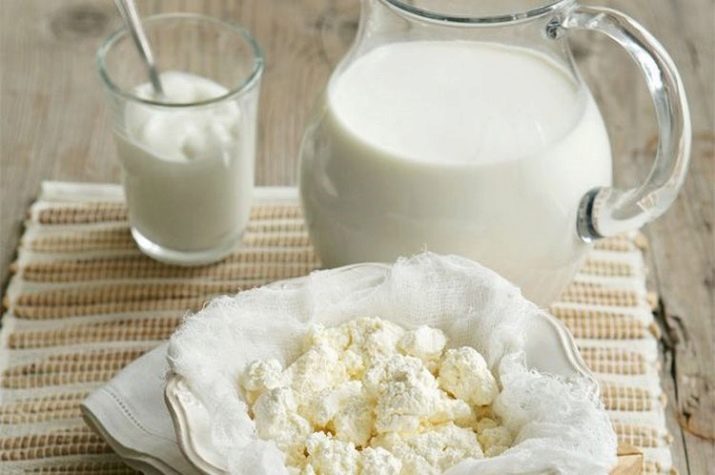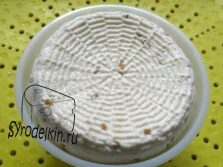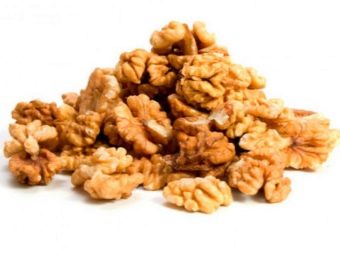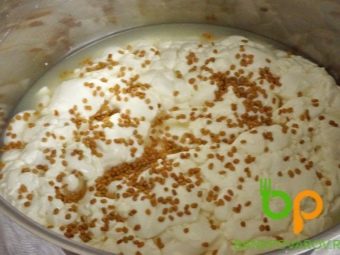Cheese with fenugreek: description, calorie and cooking recipes
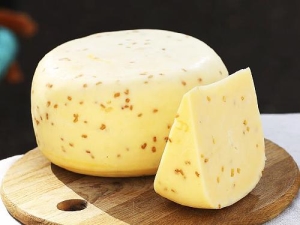
Cheese is a dairy product that can suit any gourmet.The first cheese appeared many millennia ago, and now, due to the number of different types of cheese, the head can spin. Due to the large variety of cheeses, everyone can find what he likes. Today, you can easily get the desired cheese: hard, soft, melted, with mold or a variety of additives. For example, cheese with fenugreek is very interesting.
Fenugreek
Fenugreek is a plant whose seeds are used as a seasoning. With fenugreek seeds make salads, stews, soups, bake bread. Seeds are loved in traditional medicine, used to combat colds and for the general strengthening of the immune system. You can also use grains in home cosmetology: make masks for hair and face.
Cheese with fenugreek
Fenugreek seeds are added to the production of cheeses. There are several varieties of cheese with fenugreek, for example: Cinzano, Grun Wald, Armel, green and curd. Cheeses differ in taste, so everyone can find what they like.
Caloric value and the ratio of BJU to 100 g of cheese with fenugreek:
- energy value - 336 kcal;
- proteins - 27 g;
- fats - 24 g;
- carbohydrates - 0 g.
Beneficial features
Due to the content of vitamins (A, E, C), chemical elements (potassium, iron, magnesium, sodium, calcium), antioxidants, flavonoids and alkaloids, fenugreek itself and cheese with its seeds benefit the human body in many ways.
Fenugreek:
- improves the functioning of the digestive tract;
- strengthens the nervous system;
- strengthens the immune system;
- it is beneficial for diabetes;
- cleanses the body of harmful substances;
- helps lower cholesterol;
- helps to increase potency;
- improves skin condition;
- strengthens nails and hair;
- reduces the symptoms of PMS symptoms;
- recommended when breastfeeding.
Contraindications
All products have contraindications. And any food should be consumed in moderation so as not to cause unwanted harm.
Contraindications to the use of fenugreek:
- childhood;
- pregnancy;
- allergy;
- bleeding;
- thyroid problems.
Green cheese
To make green cheese, take dried grass of fenugreek blue. It is put in skimmed milk and heated, not boiling. Pour in the acid so that the milk coagulates and salt. Then the cheese mass is spread in forms, and after a few days they are laid on a cloth and suspended to ripen for half a year. At the exit get a hard cheese of a green shade with a pleasant spicy taste.
Home cooking recipes
Cheese with fenugreek can be found in the store, but if you wish, you can make it yourself at home. Cheese-making is a fairly simple process. Only it is important to consider that the output will be small.
First recipe
Elementary method of cooking cheese.
Required:
- 1 kg of cottage cheese;
- 1 liter of milk;
- fenugreek seeds;
- 3 eggs;
- 110 g butter;
- salt;
- soda on the tip of a teaspoon.
The amount of salt must be controlled during the cooking process. Select the salinity to your taste. Standard volume in such proportions - 2 tablespoons. But the salt is different now, so you still have to try the cheese during cooking.
Sequencing.
- Put the cottage cheese in the pan, pour in the milk.
- Stir, warming, but not reaching boiling.
- When the milk is curled, pour the cheese mixture onto cheesecloth and allow the whey to drain.
- Transfer the mass to the pan.
- Put the eggs, soda, seeds and oil, salt.
- Place on weak power, stir.
- When the mixture becomes monotonous, pour it into the form for solidification.
- Leave in a cool place.
Second recipe
Council for cooking cheese with fenugreek and walnuts. Walnut has a positive effect on the body in diabetes, poisoning, colds, problems of a male nature.
Required:
- 1 liter of milk (fat content 3.2%);
- 1 liter of kefir (fat content 3.2%);
- fenugreek seeds;
- walnuts;
- salt.
Sequencing.
- Mix milk and kefir.
- Heat without boiling.
- When the milk is curled, turn off the heat and leave, covered with a lid, for 10 minutes.
- Drain the curd on the cloth and allow the serum to drain.
- Add salt, seeds and nuts to the mass, mix.
- Move the mixture into the mold and put the press.
- Allow to cool, then put in the fridge until solid.
Third recipe
This option requires a little more special ingredients and time, and the output is about 1/10.
Required:
- 5 liters of milk;
- fenugreek seeds;
- 2 tablespoons leaven;
- 0.05 g of rennet;
- 1 liter of water;
- 3 tablespoons of salt.
Sequencing.
- Dilute the rennet in 50 ml of water, leave for half an hour.
- Heat the milk to 40 degrees, add the leaven, leave for half an hour.
- Mix the milk and the enzyme in containers with a large bottom area, leave for an hour.
- Cut the mixture into cubes and leave for 10 minutes.
- Stir the resulting grain for 10 minutes.
- Drain the serum through a sieve.
- Pour out the seeds.
- Mix well.
- Put in a form for curing weave and put there cheese mass.
- After half an hour, turn the curd from the mold onto another cloth and put it back into the mold.
- An hour later, put the cheese in a form without a cloth.
- After 6 hours, turn and return to the form.
- After 6 hours, stir the salt in a liter of water and put the cheese in it for an hour.
- Turn the cheese in the solution and leave for another hour.
- Put the cheese on the cloth for half an hour.
- Put in the fridge for a week.
Fenugreek seeds have excellent beneficial properties, so cheese with fenugreek is also very useful.
It is easy to find on the shelves of the stores or to do it yourself. The variety of varieties will allow you to find something that will appeal to almost everyone, and the choice of the amount of salt and seeds in home cooking will help create the best cheese to your taste.
To learn how to cook Kachotta cheese with fenugreek in a home mini-cheese factory, see below.







